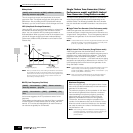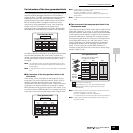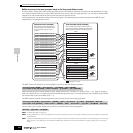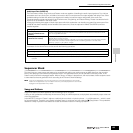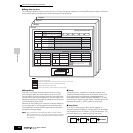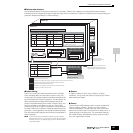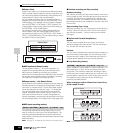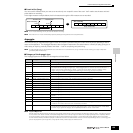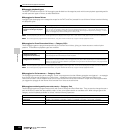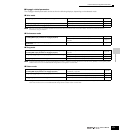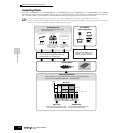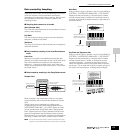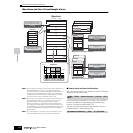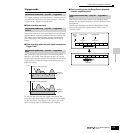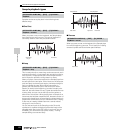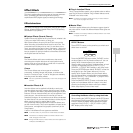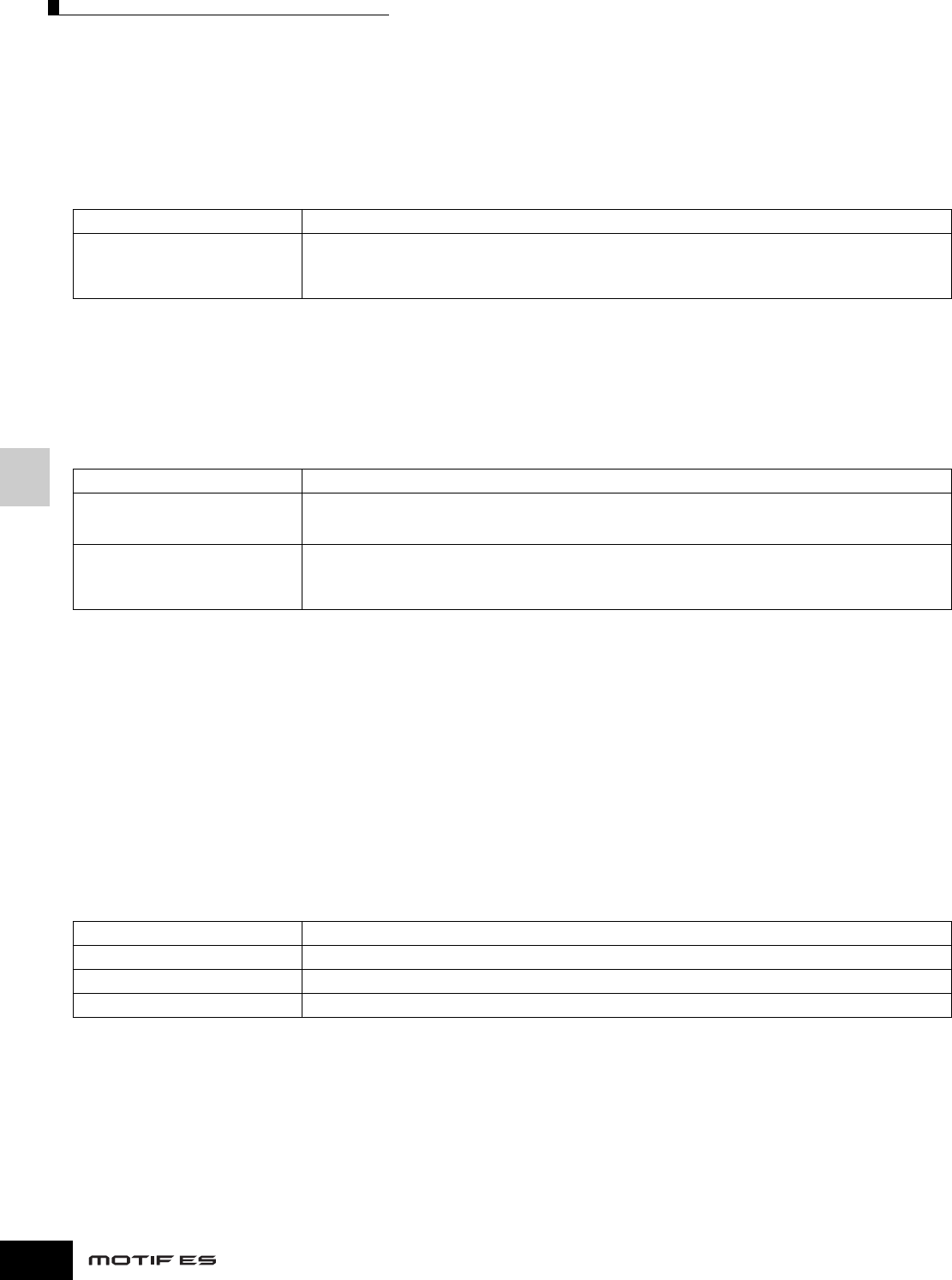
Internal Structure (System Overview)
170
Owner’s Manual
Basic Structure
■ Arpeggio playback types
The MOTIF ES features a total of 1787 Arpeggio types divided into 18 categories, each with its own playback type designed for
use with particular types of Voices, as described below.
● Arpeggios for Normal Voices
Arpeggio types (belonging to the categories except for the DrPC and Cntr) created for use of Normal Voices have the following
two playback types.
n The two playback types above are not distinguished by the category name or type name. You’ll have to actually play the types and hear the difference.
n Since these types are programmed for Normal Voices, using them with Drum Voices may not give musically appropriate results.
● Arpeggios for Drum/Percussion Voices — Category: DrPc
These arpeggio types are programmed specifically for use with Drum Voices, giving you instant access to various rhythm
patterns. Three different playback types are available.
n The three playback types above are not distinguished by the category name or type name. You’ll have to actually play the types and hear the difference.
n Since these types are programmed for Drum Voices, using them with Normal Voices may not give musically appropriate results.
● Arpeggios for Performances — Category: Comb
The Arpeggio types belonging to the category “Comb” are programmed so that different arpeggios are triggered — an arpeggio
for a Normal Voice and an arpeggio for a Drum Voice — depending on the played note. These types are useful in the
Performance mode in which multiple voices (Drum Voice and Normal Voice) are combined in a layer since these types enable
you trigger the arpeggio for the Normal Voice and the Drum Voice at the same time.
● Arpeggios containing mainly non-note events — Category: Cntr
These arpeggio types are programmed primarily with Control Change and Pitch Bend data. They are used to change the tone or
pitch of the sound, rather than play specific notes. In fact, some types contain no note data at all. When using a type of this
category, set the KeyMode parameter to “direct” with the following operations.
Playback only of the played notes The Arpeggio is played back using only the played note and its octave notes.
Playback of a programmed
sequence according to the played
chord
These Arpeggio types have the several sequences each of which is suited for a certain chord type. Even if you press
only one note, the Arpeggio is played back using the programmed sequence — meaning that notes other than the
ones you play may be sounded. Adding notes to those already held changes the sequence accordingly — in other
words, the arpeggio plays back according to the chord you play.
Playback of a drum pattern Pressing any note(s) will trigger the same rhythm pattern.
Playback of a drum pattern, plus
additional played notes
(assigned drum instruments)
Pressing any note will trigger the same rhythm pattern. Adding notes to the one already held produces additional
sounds (assigned drum instruments) for the drum pattern,
Playback only of the played notes
(assigned drum instruments)
Playing a note or notes will trigger a rhythm pattern using only the notes played (assigned drum instruments). Keep in
mind that even if you play the same notes, the triggered rhythm pattern differs depending on the order of the notes
played. This gives you access to different rhythm patterns using the same instruments simply by changing the order
in which you play the notes.
Voice mode [VOICE] → Voice selection → [EDIT] → [COMMON] → [F3] ARP → [SF1] TYPE → KeyMode
Performance [PERFORM] → Performance selection → [EDIT] → [COMMON] → [F3] ARP → [SF1] TYPE → KeyMode
Song mode [SONG] → Song selection → [MIXING] → [EDIT] → [COMMON] → [F3] ARP → [SF1] TYPE → KeyMode
Pattern mode [PATTERN] → Pattern selection → [MIXING] → [EDIT] → [COMMON] → [F3] ARP → [SF1] TYPE → KeyMode



